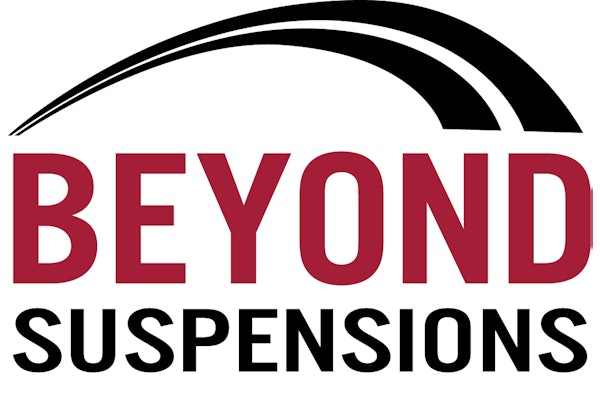For many distributors, service has become a vital source of revenue, customer satisfaction and competitive differentiation.
Whether driveline bench service, mobile maintenance or on-vehicle, many companies recognize the value of becoming a service-led organization and are re-aligning their service operations with their overall business strategies.
Why?
- Distributors are looking to new customers for growth. An overwhelming portion of respondents in a recent distributor study view new customers as their most important source of revenue growth. This ‘grass is greener’ strategy was unexpected since prospecting new business usually falls behind the importance placed on growing with current customers and increasing their loyalty.
- Increasing the role of service technicians in the sales process is a growth strategy that is gaining momentum. Service-oriented distributors see the importance of empowering their service techs with information to allow them to cross-sell and up-sell in the field.
- Gathering data is not the same as using it. Using key performance metrics creates significantly more equipment uptime and customer satisfaction. Fleets sporting the best uptime were more likely to gather and use all six measures included in the survey.
Wade & Partners has conducted an online survey of managers in the heavy equipment sector to understand the service strategies of their companies. The study looked at three industry segments: Industrial equipment; heavy-duty fleet operators and construction/mining/farming. These industries were selected because they share similar equipment service demands and face communication challenges in mobile environments.
The survey provided interesting results in several areas listed below.
Service Strategies
Aligning service initiatives with overall business strategy is becoming core to distributors serving these end user markets. The top four strategies were:
- Increasing the proportion of service revenue in the service/product mix;
- Increasing revenue from preventive maintenance;
- Benchmarking performance in the service portion of sales;
- Using information technology to help analyze the whole channel.
The most important strategy was increasing service revenue in the current product/service mix. Three areas that are key to this are:
- Increasing preventive maintenance services (including mobile);
- Growing the sales role of service technicians in the field;
- Increasing fee-for-service on in-service diagnostics.
Distributor and Service Provider Growth
A number of tactics are vital to achieving revenue and profit growth. The two can be managed independent of one another:
- Revenue: Bringing service technicians into the organization as a whole is a strategy that is being implemented more frequently. Increasing their sales roles will sometimes feel like “squeezing a square peg into a round hole.” However, the most effective business-to-business sales people are usually the people who customers see as the most insightful and effective problem-solving partners.
Service technicians are the eyes and ears of the marketplace, yet increasing their sales role has become a lost opportunity for decades.
- Profit: When considering cost-to-income ratio improvements, many think first of reducing costs. Revenue enhancing strategies, however, are the other side of this equation. The most effective ways to increase incomes must be well-targeted to bring the organization together in the selling effort.
To deliver optimized packages, the following questions must be answered:
- Which services will the customer refuse to live without?
- Which services have high cost of sales, but have proven to be valued by customers who benefited from them?
- Which services are expensive to deliver when delivered alone, but delivery costs drop dramatically when bundled with other services?
Measuring Success in Equipment Service
In the survey, respondents were asked whether they gathered information on six characteristics of the equipment service business:
- Uptime and equipment availability;
- Mean time between failures (MTBF);
- Mean time to repair (MTTR);
- Cost of down time;
- Time to respond;
- Customer satisfaction with solution.
According to the survey results, many equipment critical businesses are not gathering these measures. Companies that do not measure these things Companies that do not know these things cannot talk specifically with their customers about the effect that repairs have had on their customers’ cash flows and revenues. Companies that do know these things can. It is that simple.
Reporting Data to Customers
One of the most frequently missed opportunities to generate loyalty among customers is failure to report service and satisfaction metrics back to them. Many organizations fear sharing their report cards because they are not living up to what they think are the equipment users’ standards. These professionals, however, often value dialogue more than the achievement of certain standards.
The opportunity cost of not reporting may be measured in actual dollars. However, it is the dialogue between a provider and a customer – whether internal or external – that grows profits and revenues. Sharing report cards makes that dialogue more open and meaningful and draws the supplier and the customer into a partnership.
Conclusions
Too often, organizations become repositories of “data” and yet find they don’t have enough street-level “information” to make knowledgeable decisions about how to grow their businesses. Best-in-class companies realize the value of integrating their service engineers with their back office functionality. They are empowering their service personnel with up-to-the-minute information that allows them to successfully cross-sell and up-sell in the field. This effort also sets your company as the go-to expert on tough issues.
Bill Wade is a partner at Wade & Partners and a heavy-duty aftermarket veteran. He is the author of Aftermarket Innovations. He can be reached at [email protected].










